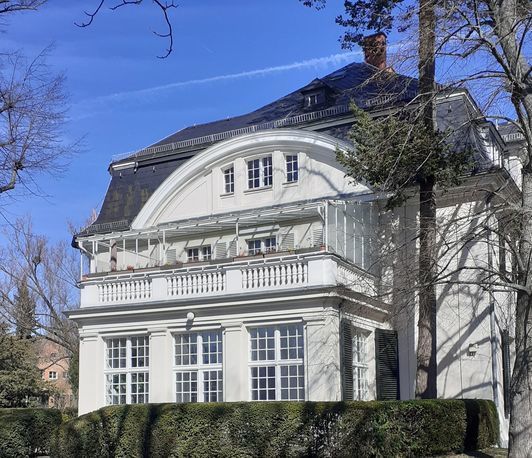Vibrational Circular Dichroism of Molecular Crystals: The Interplay of Symmetry and Chirality
- MP Department Seminar
- Date: Jun 2, 2023
- Time: 09:30 AM c.t. - 10:30 AM (Local Time Germany)
- Speaker: Dr. Sascha Jähnigen
- Ecole Normale Superieure, Départment de Chimie, Paris
- Location: Haber Villa
- Room: Seminar Room
- Host: Department of Molecular Physics
- Contact: green@fhi.mpg.de

Chiroptical spectroscopy provides an increasingly important, cost-effective alternative for the study of chiral substances in the solid state. In recent years, vibrational circular dichroism (VCD) – the chiral form of IR absorption spectroscopy – has come into focus as a very sensitive probe of molecular conformation and environment. It has been applied to a wide range of molecules including natural products, host-guest systems, proteins, nanoparticles, or catalysts, as well as the formation of chiral phases from achiral subunits. VCD differs from electronic circular dichroism in that it relates directly to vibrational transitions in the supramolecular chiral framework, such as functional groups connected by covalent or non-covalent interactions (hydrogen bonds etc.). Therefore, the identification of enantiomorphisms in the crystal structure – at constant IR absorption – is a key feature of solid-state VCD, which can be used to distinguish polymorphic forms.[1-4]
Accurate calculations are required to interpret VCD spectra, which also
requires the magnetic response of the electrons to the vibrational transition.
This can be done in the realms of perturbation theory and has become a standard
feature of many quantum chemical codes. However, the calculation of the VCD of
solids has long been considered infeasible due to periodic boundaries imposed
by the crystal structure.
In this talk, we show that it is possible to formulate VCD with an explicit
account for periodicity, reconnecting the theoretical model to the (finite)
physical system.[3] This allows us to distinguish between contributions
originating from molecular chirality and from chiral crystal packing. Our
calculations of several crystalline systems find that while IR absorption
hardly depends on the symmetry of the space group, the situation is different
for VCD, where completely new non-local patterns emerge: even for achiral space
group, a single proper symmetry operation has a large impact on the VCD
spectrum, which reflects the supramolecular chirality of the crystal.[2]
References:
1. Jähnigen, S. Angew. Chem. Int. Ed. 2023, e202303595.
2. Jähnigen, S. et al. Angew. Chem. Int. Ed. 2023, e202215599.
3. Jähnigen, S. et al. J. Phys. Chem. Lett. 2021 12, 7213-7220.
4. Jähnigen, S. et al. Angew. Chem. Int. Ed. 2018 57, 13344-13348.